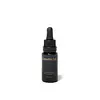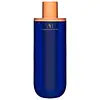What's inside
What's inside
 Key Ingredients
Key Ingredients

 Benefits
Benefits

 Concerns
Concerns

 Ingredients Side-by-side
Ingredients Side-by-side

Water
Skin ConditioningPentylene Glycol
Skin ConditioningSodium Cocoyl/Stearoyl (Alanine/Arginine/Asparagine/Aspartic Acid/Glutamic Acid/Glutamine/Glycine/Histidine/Isoleucine/Leucine/Lysine/Phenylalanine/Proline/Serine/Threonine/Tyrosine/Valine)
EmollientGlycerin
HumectantHedychium Coronarium Root Extract
MaskingTripeptide-1
Skin ConditioningPolygonum Aviculare Extract
EmollientHoney
HumectantNonapeptide-1
Skin ConditioningAcetyl Heptapeptide-4
HumectantPhytosphingosine
Skin ConditioningSea Whip Extract
Skin ConditioningNiacinamide
SmoothingHydrolyzed Hyaluronic Acid
HumectantAminobutyric Acid
Adenosine
Skin ConditioningThioctic Acid
AntioxidantGlycolic Acid
BufferingBacillus
Skin ConditioningPolysorbate 20
EmulsifyingAllantoin
Skin ConditioningCaprylyl Glycol
EmollientLecithin
EmollientButylene Glycol
Humectant1,2-Hexanediol
Skin ConditioningDextran
Phenoxyethanol
PreservativeEthylhexylglycerin
Skin ConditioningXanthan Gum
EmulsifyingWater, Pentylene Glycol, Sodium Cocoyl/Stearoyl (Alanine/Arginine/Asparagine/Aspartic Acid/Glutamic Acid/Glutamine/Glycine/Histidine/Isoleucine/Leucine/Lysine/Phenylalanine/Proline/Serine/Threonine/Tyrosine/Valine), Glycerin, Hedychium Coronarium Root Extract, Tripeptide-1, Polygonum Aviculare Extract, Honey, Nonapeptide-1, Acetyl Heptapeptide-4, Phytosphingosine, Sea Whip Extract, Niacinamide, Hydrolyzed Hyaluronic Acid, Aminobutyric Acid, Adenosine, Thioctic Acid, Glycolic Acid, Bacillus, Polysorbate 20, Allantoin, Caprylyl Glycol, Lecithin, Butylene Glycol, 1,2-Hexanediol, Dextran, Phenoxyethanol, Ethylhexylglycerin, Xanthan Gum
Water
Skin ConditioningGlycerin
Humectant1,2-Hexanediol
Skin ConditioningCellulose
AbsorbentEthylhexyl Polyhydroxystearate
EmollientResveratrol
AntioxidantSqualane
EmollientSodium Acrylates Copolymer
Ascorbyl Tetraisopalmitate
AntioxidantOryza Sativa Bran Oil
EmollientMaltitol
HumectantLeontopodium Alpinum Callus Culture Extract
AntioxidantXylitylglucoside
HumectantLecithin
EmollientAnhydroxylitol
HumectantCitric Acid
BufferingXylitol
HumectantHydrolyzed Rice Protein
Skin ConditioningMaltodextrin
AbsorbentSodium Hyaluronate
HumectantSodium Hydroxide
BufferingO-Cymen-5-Ol
AntimicrobialPunica Granatum Extract
AstringentSodium Phytate
Glucose
HumectantXanthan Gum
EmulsifyingCamellia Sinensis Leaf Extract
AntimicrobialHydrogenated Lecithin
EmulsifyingTocopheryl Acetate
AntioxidantAlanyl Glutamine
HumectantArginine
MaskingOligopeptide-177
Potassium Sorbate
PreservativeSodium Chloride
MaskingPhenylalanine
MaskingSisymbrium Irio Seed Oil
MaskingWater, Glycerin, 1,2-Hexanediol, Cellulose, Ethylhexyl Polyhydroxystearate, Resveratrol, Squalane, Sodium Acrylates Copolymer, Ascorbyl Tetraisopalmitate, Oryza Sativa Bran Oil, Maltitol, Leontopodium Alpinum Callus Culture Extract, Xylitylglucoside, Lecithin, Anhydroxylitol, Citric Acid, Xylitol, Hydrolyzed Rice Protein, Maltodextrin, Sodium Hyaluronate, Sodium Hydroxide, O-Cymen-5-Ol, Punica Granatum Extract, Sodium Phytate, Glucose, Xanthan Gum, Camellia Sinensis Leaf Extract, Hydrogenated Lecithin, Tocopheryl Acetate, Alanyl Glutamine, Arginine, Oligopeptide-177, Potassium Sorbate, Sodium Chloride, Phenylalanine, Sisymbrium Irio Seed Oil
Ingredients Explained
These ingredients are found in both products.
Ingredients higher up in an ingredient list are typically present in a larger amount.
1,2-Hexanediol is a synthetic liquid and another multi-functional powerhouse.
It is a:
- Humectant, drawing moisture into the skin
- Emollient, helping to soften skin
- Solvent, dispersing and stabilizing formulas
- Preservative booster, enhancing the antimicrobial activity of other preservatives
Glycerin is already naturally found in your skin. It helps moisturize and protect your skin.
A study from 2016 found glycerin to be more effective as a humectant than AHAs and hyaluronic acid.
As a humectant, it helps the skin stay hydrated by pulling moisture to your skin. The low molecular weight of glycerin allows it to pull moisture into the deeper layers of your skin.
Hydrated skin improves your skin barrier; Your skin barrier helps protect against irritants and bacteria.
Glycerin has also been found to have antimicrobial and antiviral properties. Due to these properties, glycerin is often used in wound and burn treatments.
In cosmetics, glycerin is usually derived from plants such as soybean or palm. However, it can also be sourced from animals, such as tallow or animal fat.
This ingredient is organic, colorless, odorless, and non-toxic.
Glycerin is the name for this ingredient in American English. British English uses Glycerol/Glycerine.
Learn more about GlycerinLecithin is a term for a group of substances found in the cell membranes of plants, animals, and humans. They are made up of mixture of phospholipids.
This ingredient has emollient and emulsifying properties.
As an emollient, lecithen helps soften the skin and creates a barrier to keep moisture in.
As an emulsifier, it also helps prevent water and oil ingredients from separating. Lecithin can also help ingredients be better absorbed by the skin.
This is because the phospholipids in lecithin produce liposomes. Liposomes help other ingredients get through the skin barrier.
Depending on the source of this ingredient, lecithin may not be fungal acne safe. This is because some sources of lecithin come from soybean oil, which may feed the malassezia yeast that feeds fungal acne.
We recommend reaching out to the brand you are purchasing from to inquire about the source of their lecithin.
Some other names for this ingredient include soy lecithin and deoiled soy lecithin.
Learn more about LecithinWater. It's the most common cosmetic ingredient of all. You'll usually see it at the top of ingredient lists, meaning that it makes up the largest part of the product.
So why is it so popular? Water most often acts as a solvent - this means that it helps dissolve other ingredients into the formulation.
You'll also recognize water as that liquid we all need to stay alive. If you see this, drink a glass of water. Stay hydrated!
Learn more about WaterXanthan gum is used as a stabilizer and thickener within cosmetic products. It helps give products a sticky, thick feeling - preventing them from being too runny.
On the technical side of things, xanthan gum is a polysaccharide - a combination consisting of multiple sugar molecules bonded together.
Xanthan gum is a pretty common and great ingredient. It is a natural, non-toxic, non-irritating ingredient that is also commonly used in food products.
Learn more about Xanthan Gum